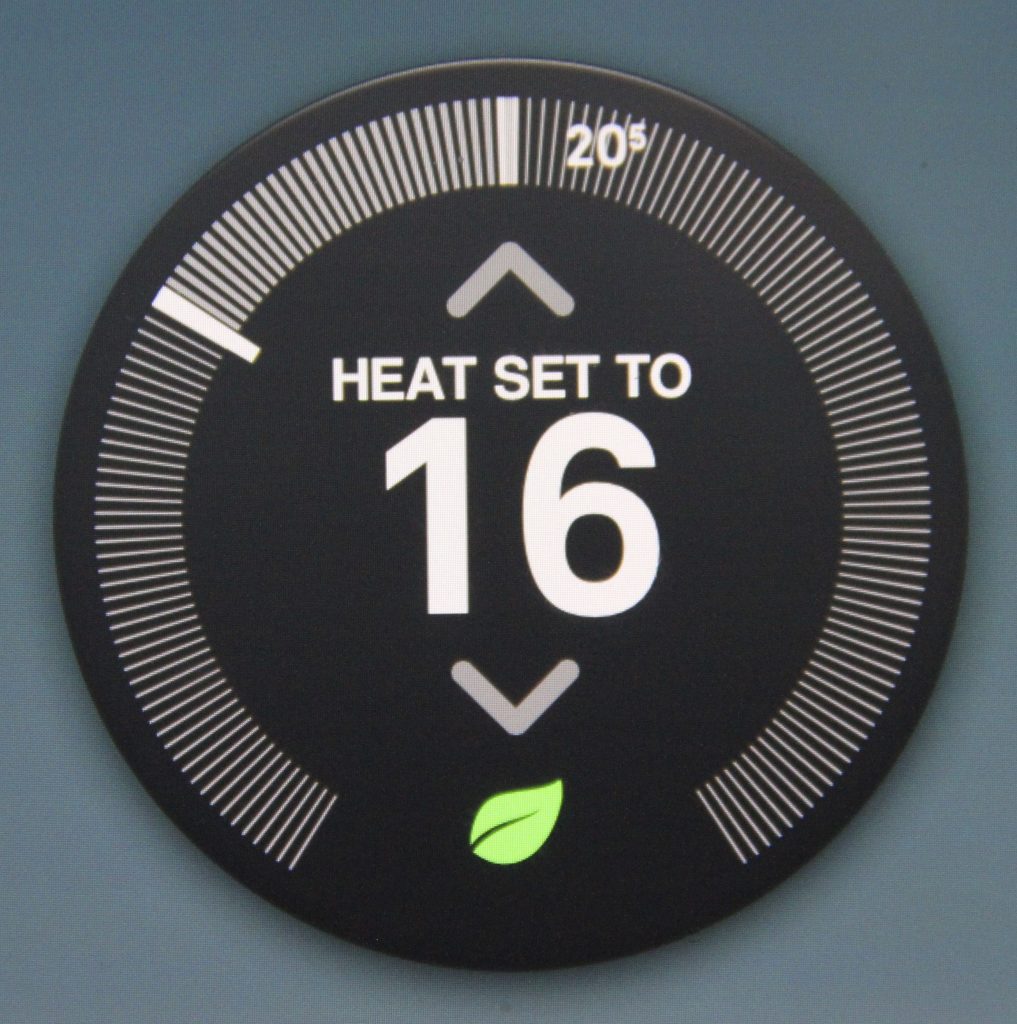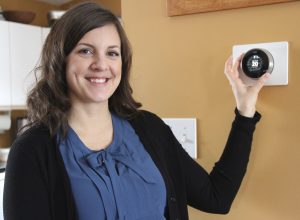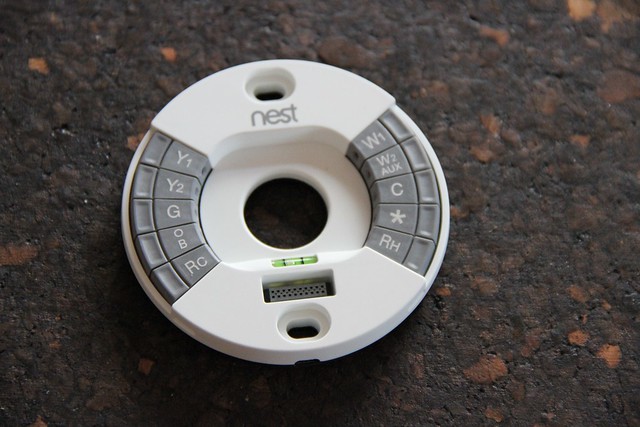By David Dodge and Duncan Kinney
When it comes to saving money and growing the economy, energy efficiency isn’t just low hanging fruit, it’s fruit lying on the ground.
As much as I would like to take credit for that quip it comes from former US Energy Secretary Steven Chu. And as long as we’re using the analogy I’d like to think of installing a programmable thermostat as fruit that’s just hanging there at mouth level, needing just a minor turn of the head to lean in and take a bite.
While programmable thermostats have been around for quite awhile the product category has seen a lot of upheaval and innovation in the past few years. Internet connectivity and mobile apps meant people could turn down the heat from across town and keep reliable data on their heating habits.
Nest test drive
Enter the Nest, a learning programmable thermostat designed by the original chief designer behind the iPod. When this maestro of industrial design turned his attention to a fairly ubiquitous (40 per cent of Canadians have programmable thermostats) but unsexy product good things were bound to happen.
According to a study led by the Energy Analysis Department at Lawrence Berkely National Laboratory the majority of programmable thermostat users, 90 per cent in this survey, use their programmable thermostat manually. That same survey also found that 15 per cent of people had the wrong times set on their thermostats (making programming them effectively somewhat impossible) and 33 per cent of people had their thermostats on a long term hold, rendering it near useless.
Even though my home already had a programmable thermostat set properly, I bought a Nest learning programmable thermostat because it’s so cool.

Set the Nest learning thermostat down to 16 C and a leaf appears to remind you that you are saving energy. You can tap the screen of your tablet to adjust the temperature. Photo David Dodge
One of the first big issues the Nest and other next-generation programmable thermostats solves is keeping the right time which it does via its internet connection. That same connection also keeps it in the loop with things like local weather. Your thermostat might know if there is a heat wave coming before you do.
It also means you can connect to it on your favourite mobile device. Having the Nest app on my iPhone and iPad was a revelation. During the learning phase I was able to set the thermostat lower from the office on the days I forgot to set it back from home.
Although the Nest is a learning thermostat I found I could check its program and make adjustments anytime I wanted to using the easy to use remote interface.
After three or four days the Nest picked up on our pattern and it created a program. The only problem is that our kids schedules are sometimes unpredictable. No problem, I ran the app on my iPad and I was able to easily point and click and set the thermostat to turn the heat back up to 20C when the kids got out of school early.
Just a warning, if you have kids, there have been occasional temperature battles between my daughter and myself from across the city.
The packaging is simple and sleek and the installation process was smooth as well. There is an online Nest Compatibility Tool where you can check if you’ve got the right wires for the Nest to work. If that doesn’t work you can even take a picture of your setup and send it to them and they’ll help you with the setup.
My wife and kids definitely get this piece of hardware. The old programmable thermostat was comparable to trying to figure out how to get your early ‘90s VCR to stop flashing 12:00. This is a glowing jewel by comparison, it’s gorgeous and it’s also simple and intuitive to use.
While the Nest costs more than other, internet-connected programmable thermostats there are a couple of things that separate it from the pack. The auto-away feature means that even if we forget to turn it down or scramble the schedule if no one walks in front of the Nest for a longish stretch of time it will turn the temperature down.
Another nifty feature is that once it’s been in operation for a while it will tell how you long it will take to reach a certain temperature. Turn it up to 22 degrees and the Nest will tell you that that will take exactly 18 minutes.
Mythbusting and hard numbers

Pam Goertzen of C3 (Climate Change Central) adjusting the Nest learning programmable thermostat. Used properly she says programmable thermostats can help you save on heating energy use. Photo David Dodge
So while we knew that using a programmable thermostat could save you energy we wanted to bring in an expert to get the details. That expert’s name is Pam Goertzen and she’s a program manager with C3 (Climate Change Central) in energy efficiency.
She busted a couple of myths right away
“Many people have heard that your furnace actually uses more fuel bringing it back up to room temperature if you turn it down too much.”
Not true, says Goertzen. For every degree lower you set your thermostat it saves you more energy.
And while a programmable thermostat can help you save money by turning down the heat when you’re asleep or away it won’t modify your behavior. The well-known Energy Star rating system stopped rating programmable thermostats because ultimately thermostats don’t save energy like a new furnace or windows would. It’s ultimately up to the user. But if it is used properly a programmable thermostat can pay for itself in as little as one month. A very modest program cited in this Statscan paper finds that a programmable thermostat can save you 6.5 per cent on your heating bill.
How else can you save on heating costs? Goertzen recommends sealing air leaks.
“If you add up all the small little leaks that you find in an average home it would be the size of a basketball. There is fairly significant air leakage in our homes and it just means doing some sealing around windows and doors, weather stripping that type of thing. It’s inexpensive and relatively simple work that can result in about 30 per cent,” says Goertzen.
Insulation is the next big potential energy saver in the home and after that it’s the furnace itself. The standards in new homes now call for 90 per cent efficient furnaces. But buildings that are only 10 or 12 years old will likely have a 78 per cent efficient furnace. If your furnace is due for replacement you may be able to save 20 per cent or more on your heating costs.
In Canada forty percent of homes have a programmable thermostat. If you don’t have one, or yours is set on permanent “hold” or to the wrong time, with a just a little effort you could save a ton of energy.
We have been turning our furnace down to 15C at night and during the day for about 15 years now. The savings are awesome and we now have trouble sleeping in guest rooms that keep their heat set high all night!
Whether it’s the Nest or something more basic it’s a inexpensive, easy way to save money in the long run. Tell us your thermostat story in the comments.






